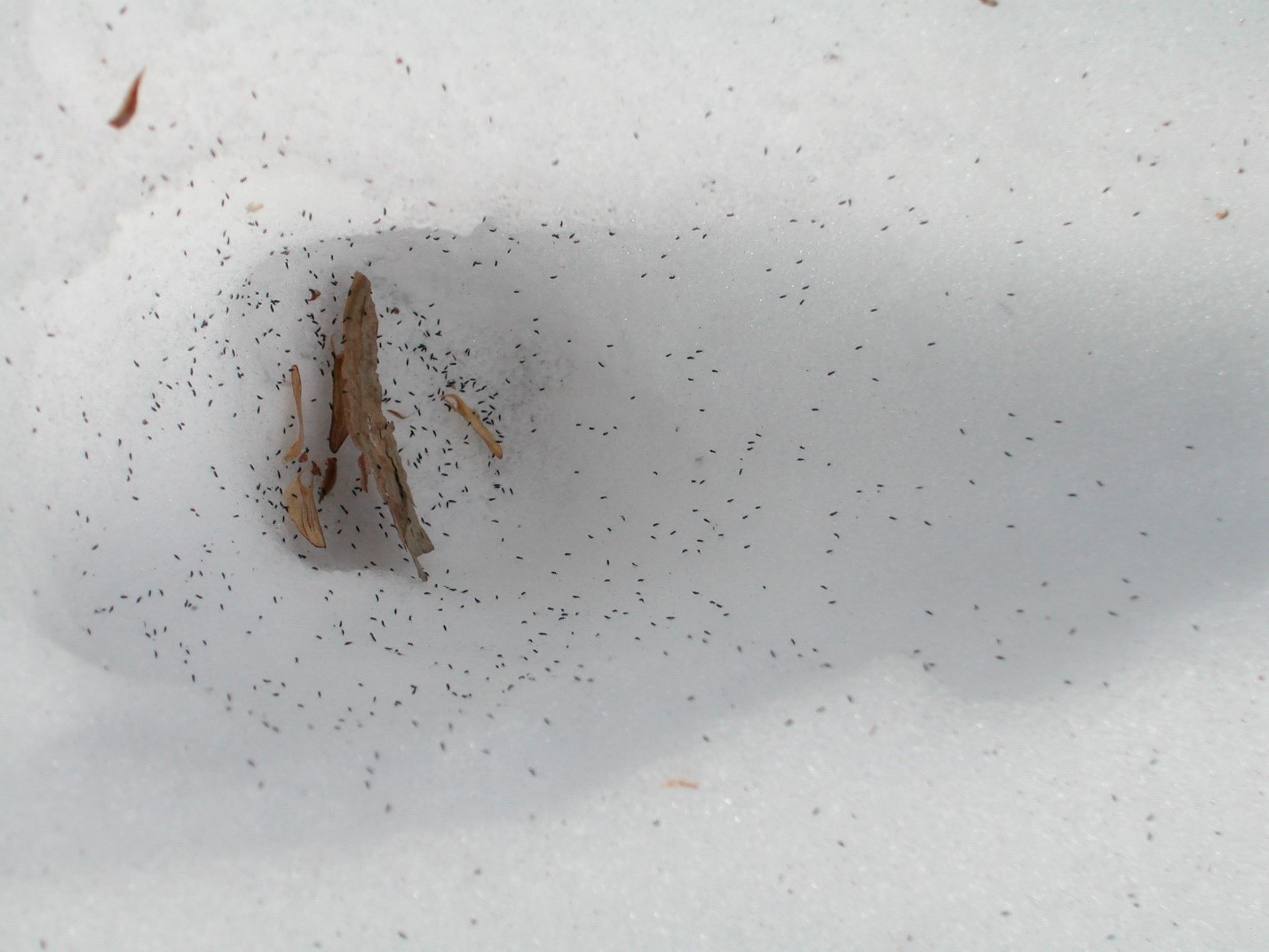By Todd Lanigan, Forest Health Specialist, Eau Claire. Todd.Lanigan@wisconsin.gov or 715-210-0150
Snow fleas are a species of springtails that are active during the winter and are generally found in groups where their dark-colored bodies stand out against the white snow. While often observed in late winter or early spring, they also come to the surface on warm winter days. Cold weather drives snow fleas back below the surface to wait for better weather.

Easily mistaken for specks of dirt or debris, snow fleas are tiny soil-dwelling animals that gather on the surface of the snow on warm winter and spring days.
Snow fleas are tiny — around an eighth of an inch long — and wingless. They crawl around on the snow slowly but can spring forward rapidly, moving three to four inches in a single movement. A unique, fork-like structure called a furcula folds under their bodies, and when released, allows the tiny animals to jump. Snow fleas can’t control the distance or direction of their travel, but this mechanism remains useful for avoiding predators.
Snow fleas live in humid environments, including soil, leaf litter, under bark and in decaying logs. With diets consisting of decaying vegetation, fungi, bacteria, pollen, algae, lichens and insect feces, snow fleas help break down organic matter and release nutrients back into the soil. They provide these services in many settings, including forests, lawns and gardens.
Snow fleas are not related to true fleas and they do not bite, sting or otherwise cause harm to animals. If you are outdoors this winter or spring, keep an eye out for these unique creatures and enjoy watching them in action.
